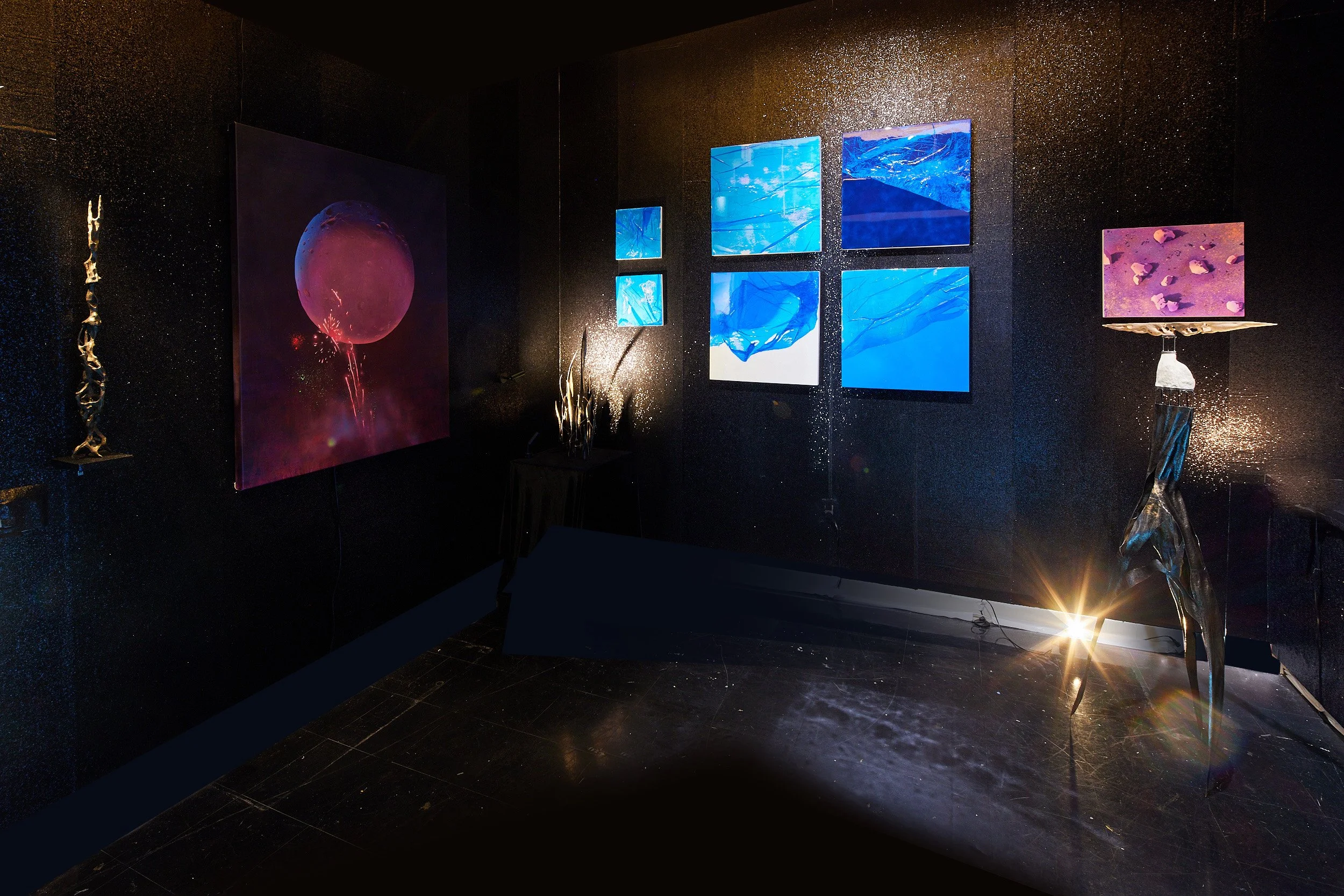SPRING/BREAK Art Show NYC 2022
The Distance of the Moon
Featuring the artwork of:
Theresa Bloise, Qiaosen Yang & Ivan Stojakovic
Curated by:
Fay Ku & Cheryl Molnar
We do not live under the same heavens as our ancestors when the sun, moon, and stars shone with the awesomeness of the gods. From the Renaissance to modern times, the colonial impulse of the Western world sought to conquer the firmaments. Scientific revolutions corralled the celestial into rational, knowable terms. If superstition and ignorance disappeared, so did wonder and humility.
The Distance of the Moon, a three-person exhibition integrating painting, drawing, sculpture, and installation, posits instead that in our postmodern era, it is through technology we reacquaint ourselves to the universe’s inherent strangeness, that we inhabit an alien landscape, and we revel in our proximity to the sublime.
Italo Calvino’s “The Distance of the Moon,” a fairy-tale reimagining of the true phenomenon of the moon receding from Earth, and a transformative sojourn under desert skies serve as inspiration for Theresa Bloise’s Moonlight series. Fueling her paintings and drawings are bits of scientific knowledge and the sensation of the ephemeral, from the inky darkness of night to the charged air of setting suns, as an almost palpable entity. These are celestial portraits: ordinary rocks transform into lunar landscapes, evening sky luminesce with orbs ablaze, and waterfalls appear with the force of ecstatic vision.
Ivan Stojakovic’s abstracted aerial landscapes also glow with an otherworldly luminosity. Through his inclusion of industrial, “unnatural” materials, Stojakovic takes a stance on the perversity of human consumerism, and of its destructiveness on the environment—but his is ultimately an anti-anthropocentric view of nature. For nothing ultimately is outside nature, and what is “manmade” can yet remain also wild, transformed. His paintings’ sensual surfaces, through iridescent underpainting, translucent molten plastic, seduce with their terrible beauty, paeans to the aesthetic experience of the sublime.
Qiaosen Yang preserves traditional Bai (a Chinese minority ethnic group) craft techniques, yet his sculptures are philosophical meditations on the fragility of civilization and culture against the passing of time. Materials have symbolic weight: a metal object can have parts added to or taken away from, and any wounds from its mutilation easily effaced; it can be melted down and refashioned into something completely different with no trace of its history. Metal objects can be artifacts upon which entire civilizations are inscribed, and then erased by conquering peoples—and yet the metal substance itself remains. Organic forms in metal, wood and bone, Yang’s sculptures are physical manifestations of his impressions from nature and the environment–the brief moments of celebration of human experience before the merciless unseeing eye of the destroyer, time.
The Distance of the Moon proposes not one but two immersive otherworldly environments as backdrop for the trio’s artworks. Taking the moonscape as inspiration, the audience first encounters a dazzling entrance to the booth. Several small-scale color-saturated paintings and framed drawings float against a simple landscape painted directly on the wall using luminous interference paint. The ground itself is likewise covered with bright, radiant material, transforming the space into an almost overwhelmingly bright landscape upon which stands two free-standing large-scale sculptures by Yang. Several of his intimately scaled sculptures nestle in velvet-lined specimen drawer, inviting viewers to handle the works. The viewer glimpses something radiant beckoning from inside a darkened enclosed space. Crossing the terminal line (the boundary between the sunlit and shadowed hemispheres of the moon) into the shadow of the moon, the audience enters a liminal space and is confronted by Bloise’s large-scale installation, dramatically spot lit in an otherwise dim space. On the other walls the viewer now sees other several large-scale paintings by Bloise and Stojakovic, similarly lit. Another large-scale free-standing sculpture glimmers in the darkened space. This environment stimulates not only the sense of sight but also of touch and sound: dark fabrics covering the walls dampen the room’s acoustics, and the use of gravel or textured flooring underfoot engages the viewer’s sense of touch, and a subtle sound design score plays in the room. The exhibition echoes the works of Bloise, Stojakovic and Yang and their aims overwhelm and awe, to provide an arena for contemplation and transcendence.



